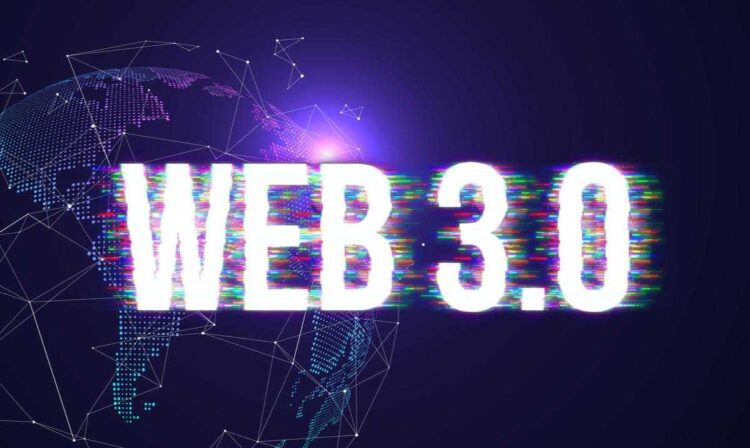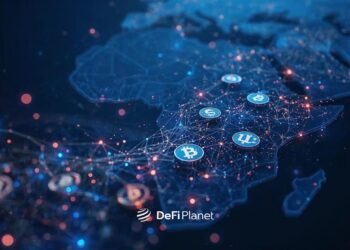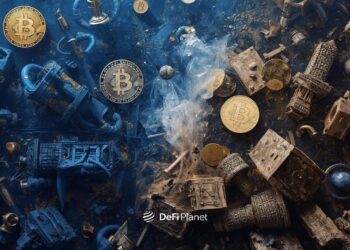As Web3 continues to grow, the way we build and use the internet is changing, and much unlike the old web, which relies on big tech companies to manage our data, apps, and identities, Web3 is creating a new kind of digital world; one that is open, user-controlled, and decentralized. To make this vision possible, we need strong infrastructure beneath the surface.
There are three key layers that intersect: decentralized storage, the compute layer, and Web3 identity. These might sound technical, but they’re actually easy to understand once you get into each of them. Decentralized storage is where you keep the important things, the compute layer is what powers everything behind the scenes, and Web3 identity is how you prove who you are without divulging your information to the industry behemoths.
These layers work together to make Web3 apps more secure, efficient, and trustworthy, and they allow users to store data without relying on centralized servers, run apps using spare computing power from around the world, and manage their digital identities in a way that puts them in control. In other words, they help Web3 move beyond hype and become something people can use every day.
In this piece, we’ll look at how these layers function, who the key players are, like Filecoin for storage, Akash for compute, and Ceramic for identity, and why this decentralized infrastructure could shape the future of the internet.
Decentralized Storage: Filecoin Takes the Lead
One of the earliest and strongest players in this space is Filecoin. This network allows anyone to rent out unused hard drive space to store data, and it is built on IPFS, making it transparent, secure, and resistant to censorship. Filecoin uses incentives and proof systems so users and providers can trust each other.
Filecoin is strong because it tackles a real problem: central cloud services like AWS and Google control most of the world’s data. Filecoin gives people a choice and keeps the internet more balanced.
There are academic solutions, too, for example, protocols like FileDES aim to keep data private, scalable, and efficient, all while being more powerful than older systems like Storj or Sia.
Compute Layer: Akash Brings Real Cloud Power
Storage is only part of the puzzle, and you’ll typically also need compute, which is the actual processing power to run apps, websites, and AI. Akash Network is a leading player in this space, often referred to as a “supercloud” – a decentralized version of AWS distributed across the blockchain.
Akash works by matching unused compute power (such as idle gaming rigs or servers) with individuals who need it, helping to reduce costs and making the system more flexible and open. Projects like ColdStack build on Akash to combine storage layers, such as Filecoin or Storj, with compute, thereby offering a full suite of services for Web3 developers.
Identity Layer: Ceramic Builds the Connective Tissue
To make the system trustworthy, people need reliable ways to prove their identity, and this is where Web3 identity comes in. Projects like Ceramic and frameworks like DIDs (decentralized identifiers) allow users to have a self-owned, portable online identity.
This is powerful because it means you can use the same digital ID to sign in to different apps (without relying on Google or Facebook) and keep your data under your own control.
—storage, compute, and identity —form a modular blockchain stack, and this setup allows for more powerful, efficient, and open decentralized applications
A Modular Blockchain Stack in Action
Together, these three layers, storage, compute, and identity, form a modular blockchain stack, and this setup allows for more powerful, efficient, and open decentralized apps. Developers can select the components they need, depending on their project, making innovation easier and faster.
Why It’s All Connected
- Decentralized storage ensures a single company doesn’t control our data.
- Compute infrastructure powers real-time apps, websites, and AI.
- Web3 identity gives users control over their online presence.
Together, they create the foundation for apps that are open, secure, and fair.
Who’s Winning?
- Filecoin leads in storage, thanks to real incentives and a huge ecosystem.
- Akash is emerging as a strong contender in computing, often at a better price than big cloud providers.
- Ceramic, along with emerging identity solutions, is building a future where users can own and transfer their digital identities freely.
The race isn’t over, as the innovations suggest, and many platforms are working to combine these layers, such as ColdStack, which allows apps to use storage and compute together. Projects like 180Protocol are even building private computing on top of Filecoin to protect data privacy.
What It All Means
For users, this means apps that are faster, safer, and more private, as well as ones where you won’t be locked into a single company’s services.
For developers, it offers more flexibility: They can mix and match the best storage, compute, and identity tools without rebuilding everything from scratch.
The Road Ahead
Expect to see more integration between these layers, identity tied to storage and computing, ensuring privacy, control, and efficiency. As modular tools become mainstream, we’ll see richer decentralized platforms, fairer economics, and stronger apps.
By 2026, the stack could include additional layers, such as verification services, token-based governance, and reputation systems, thereby adding even more depth to this modular model.
In Closing
The real winners in decentralized infrastructure are not just the networks themselves, but how they work together. Filecoin, Akash, and Ceramic represent the strongest foundations of storage, computing, and identity in 2025. As these pieces come together, the future of Web3 becomes more complete, creating an internet that’s truly owned by its users.
Disclaimer: This article is intended solely for informational purposes and should not be considered trading or investment advice. Nothing herein should be construed as financial, legal, or tax advice. Trading or investing in cryptocurrencies carries a considerable risk of financial loss. Always conduct due diligence.
If you want to read more market analyses like this one, visit DeFi Planet and follow us on Twitter, LinkedIn, Facebook, Instagram, and CoinMarketCap Community.
Take control of your crypto portfolio with MARKETS PRO, DeFi Planet’s suite of analytics tools.”





















